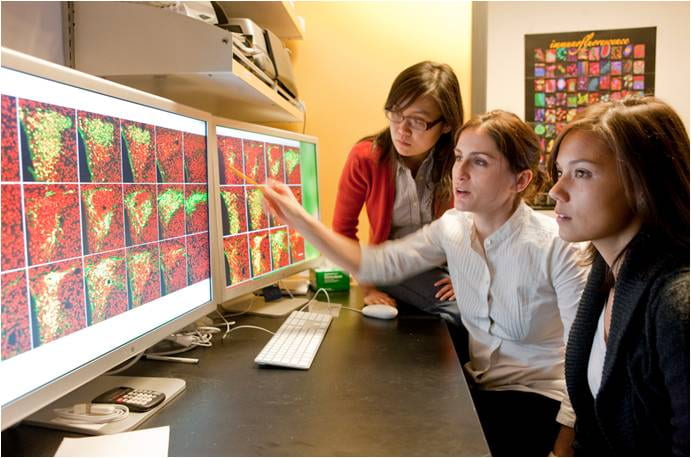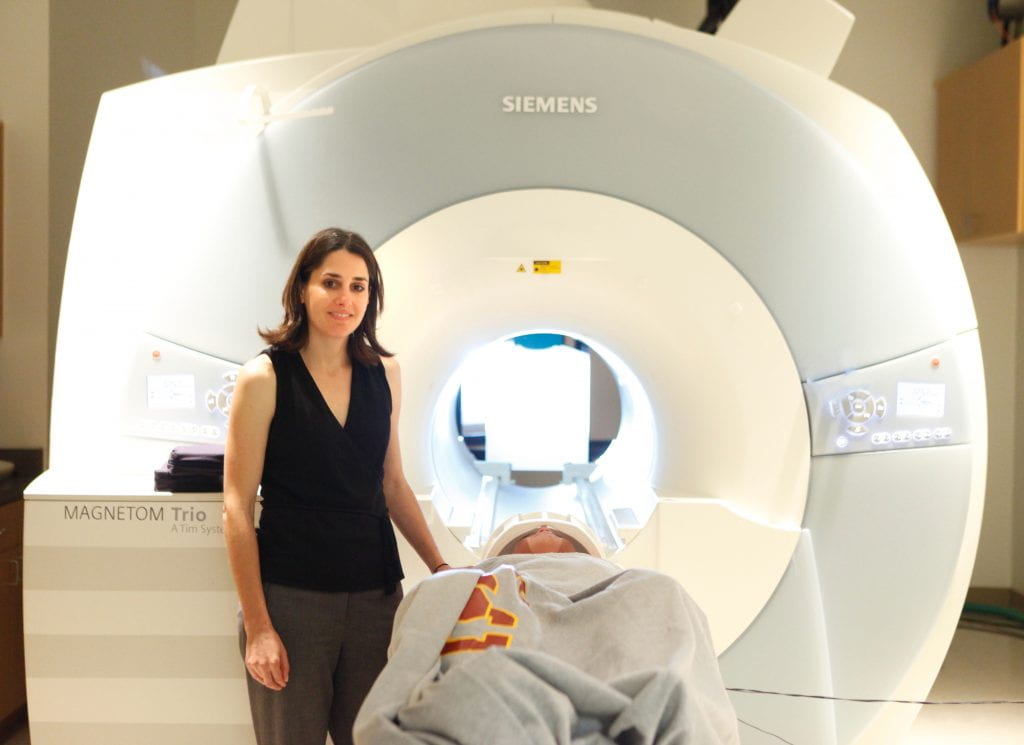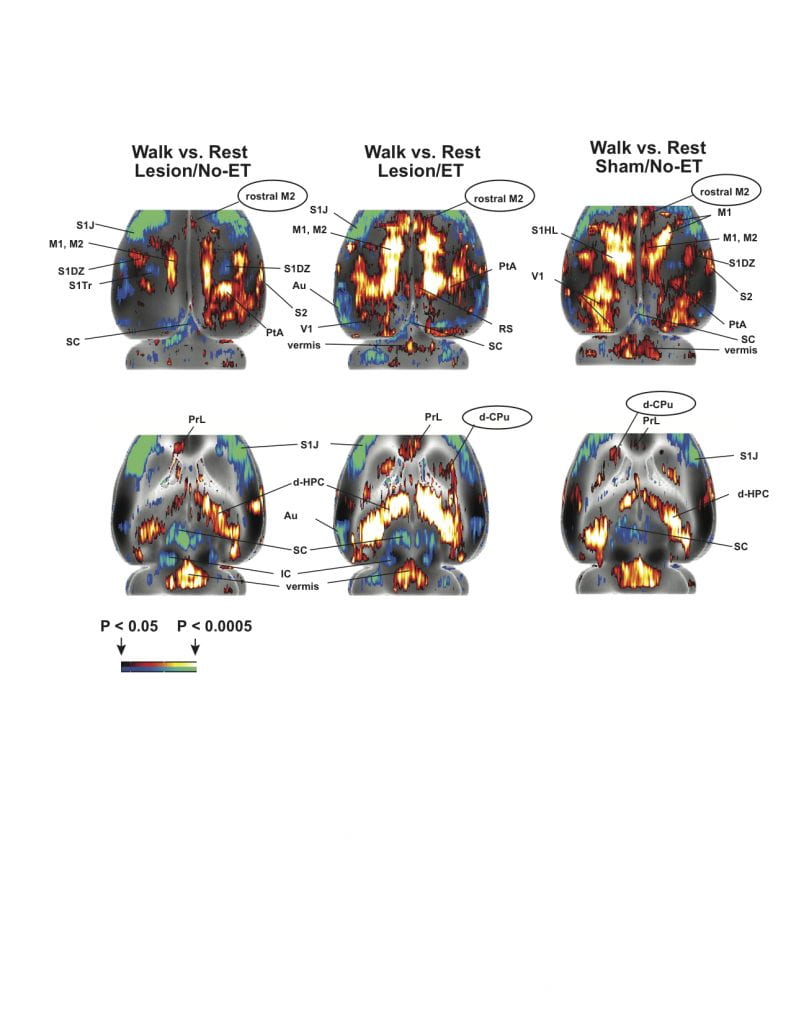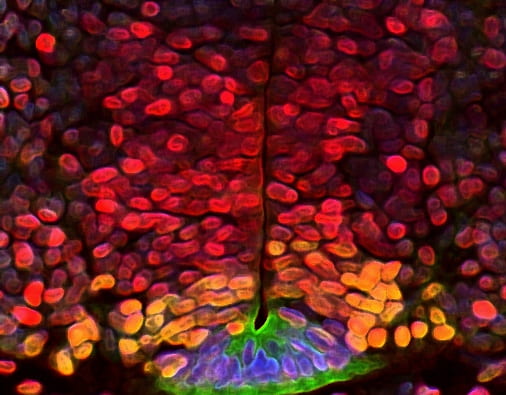(Neuroscience Graduate students Chien-Hua Wang-rear and Anna Kamitakahara – foreground) together with postdoc Karine Bouyer, PhD. (Simerly Lab)


Mary Helen Immordino-Yang, assistant professor of psychology at USC Dornsife’s Brain and Creativity Institute, is particularly interested in social emotions that promote learning, motivation and resilience, such as compassion, admiration and inspiration. Photo by Steve Cohn….Continue Reading Mary Helen Immordino-Yang, assistant professor of psychology at USC Dornsife’s Brain and Creativity Institute, is particularly interested in social emotions that promote learning, motivation and resilience, such as compassion, admiration and inspiration. Photo by Steve Cohn.

Functional activation of dorsal striatum (d-CPu) and rostral secondary motor cortex (rostral M2) are attenuated after dopaminergic deafferentation of the d-CPu and are augmented by 4 weeks of exercise training (ET). (Holschneider Lab)…Continue Reading Functional activation of dorsal striatum (d-CPu) and rostral secondary motor cortex (rostral M2) are attenuated after dopaminergic deafferentation of the d-CPu and are augmented by 4 weeks of exercise training (ET). (Holschneider Lab)

E15 Motor Neuron Development: The Shh signaling pathway functions in a time- and concentration-dependent manner to specify ventral neural cell types within the developing central nervous system. (McMahon Lab)
…Continue Reading xE15 Motor Neuron Development: The Shh signaling pathway functions in a time- and concentration-dependent manner to specify ventral neural cell types within the developing central nervous system. (McMahon Lab)
Students and faculty in the USC Neuroscience Graduate Program come from a variety of academic backgrounds to study questions spanning the entire spectrum of modern neuroscience research. Key questions include: how do molecules work together in time and space to build functioning nerve cells? how do individual neurons and their interconnections lead to the emergent…Continue Reading Overview
USC Neuroscience Graduate Program 3641 Watt Way, HNB 120 Los Angeles, California 90089-2520 United States 213-740-8796 Fax: 213-740-5687…Continue Reading Footer
Welcome to customsites.usc.edu. This is your first post. Edit or delete it, then start blogging!…Continue Reading Hello world!